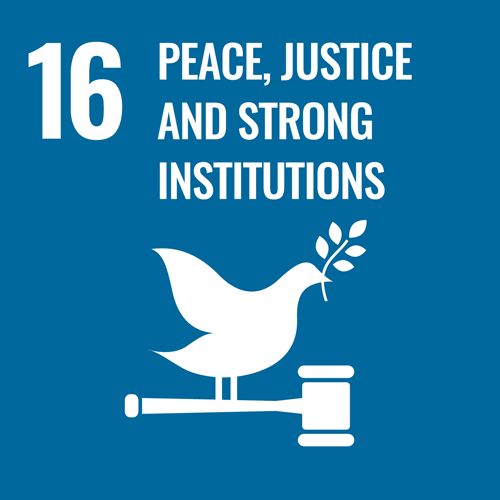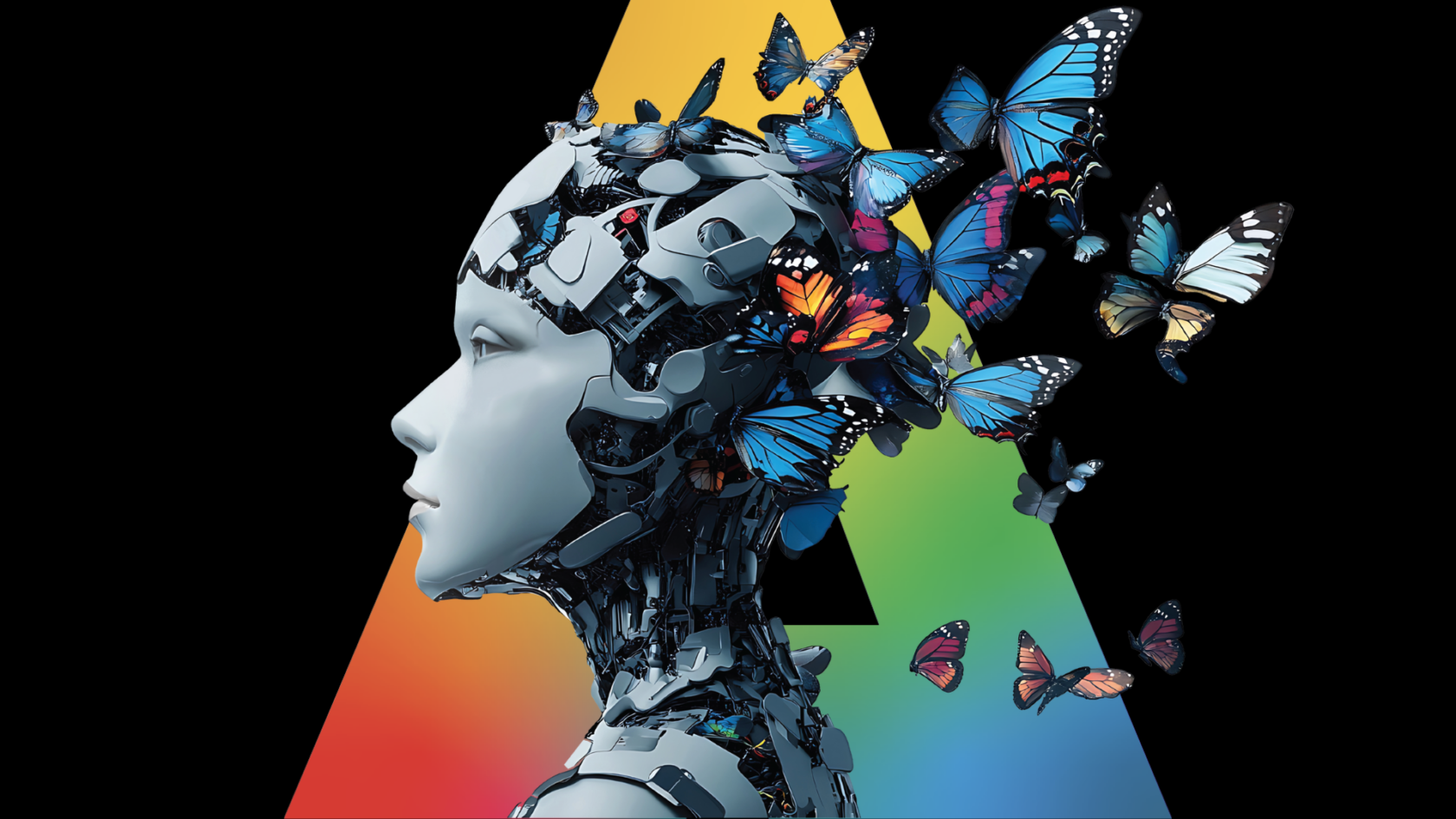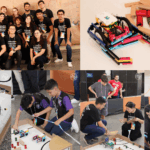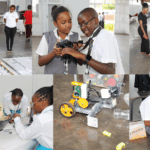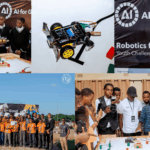Estonia, a world leader in digital governance, is now harnessing the power of artificial intelligence to upgrade their systems and become even more readily available to meet citizens’ needs.
In a keynote at the year-round AI for Good Global Summit 2020, Estonia’s Chief Data Officer Ott Velsberg presented the hits, misses, and lessons to be learned from their efforts.
Citizens at the centre
Estonia has adopted a digital-first, citizen-centric form of governance. One of the first countries to legislate Internet access as a basic human right, more than 90 percent of Estonia’s 1.3 million residents are now online. Estonia also adheres to the so-called ‘once-only principle’, where a citizen provides certain information to the authorities a single time. According to Velsberg, a consent management platform currently in development will enable citizens to manage how their information is accessed and shared.
Today, almost 99 per cent of Estonian state services are already online, said Velsberg.
The government’s goal is to enable a ‘zero bureaucracy’ experience.
“We need to rethink how to make the government as lean, as proactive and as personalized as possible,” he emphasized.
Estonia has set up a seamless public services implementation plan, right from childbirth and starting a business to purchasing cars, searching for jobs and managing successions, explained Velsberg. At the centre is X-Road, an open-source data exchange layer enabling the transfer of data between systems. According to Velsberg, over 3,000 public and private entities use the system, performing over 1.3 billion transactions annually.
From myth to AI strategy
Estonia has drawn upon the mythological creature ‘Kratt’ to envision its AI strategy. Made of hay and wood or other household objects, “the Kratt helps you carry out different tasks. But you also need to be cautious so that it does not lead to something horrible,” explained Velsberg. According to Estonian folklore, if the Kratt isn’t kept busy with work, it will attack its maker or owner.
For Velsberg and his team, artificial intelligence is about using machine learning and deep learning in their processes. Back in 2018, when the Estonian government set up a task force to increase the uptake of AI, there were only four AI use cases in the government.
“Today we have 47 use cases live, with 38 in development. The aim is to have at least 50 ‘Kratts’ or AI solutions in the government by July 2021,” said Velsberg.
The priority is to benefit society, he clarified. Velsberg’s team is particularly keen on creating reusable components: modules that can be used by public or private sector organizations based on their needs.
Saving time with small use cases
While there is no fully automated process at the moment in Estonian government, it uses AI to provide recommendations for, streamline, and partially automate different services.
For example, Estonia’s unemployment insurance fund uses AI to predict long-term unemployment risks of different people and offers customized recommendations on re-education and reskilling. The initial results have been positive, affirmed Velsberg.
The open-source tools in Estonia’s AI arsenal also allow for translations, speech synthesis, text analysis, automated tagging and speech recognition. “We are also developing chatbot and process analysis. Unfortunately, due to the COVID-19 crisis, two projects on speech analysis and video and picture analytics have been postponed to next year,” he added.
Text analytics software TEXTA Toolkit is helping to automatically ensure that documents in Estonia’s registry audit are compliant with the European Union’s General Data Protection Regulation. It also classifies documents as public or internal to curb data leaks and performs automatic de-identification of judicial decisions and topic tagging in customer support.
The need for tagging emerged after Estonia’s consumer protection and technical regulatory bodies merged into one entity with a common email address. “It was difficult and time-consuming to understand who was responsible for which question. Now thanks to automatic topic tagging, it is possible to streamline much of the work otherwise done by humans.”
“You don’t always need to go big to benefit the organization. Even small use cases often really pay off,” Velsberg asserted.
Investing in language technology
Some of the projects are a work in progress, he acknowledged. “When it comes to de-identifications of names, people name their children in unique ways and the corpus we use doesn’t represent all actual names,” he explained. Another project on topic detection for books in their national library did not work out due to challenges around intellectual property.
HANS, a speech recognition tool, is being used to transcribe the plenary sessions of the Estonian Parliament. While the precision in different use cases for speech recognition in parliament has come close to 95 percent, Velsberg noted that the AI is unable to predict the source when a member of parliament has never spoken before during their term.
Another learning they worked to fix right away, Velsberg recalled, was realizing that non-data specialists needed simpler explanations to use the available tools. His team is also working on parallel text translation corpora for better local services. “If we want to live in a country that has access to different systems in Estonian, we need to invest in our language technology,” he explained.
Decision-making support
The Estonian government has also used AI to inform quicker decisions, identifying topic sentiment from emergency calls and collect real-time information about traffic accidents.
Analyzing customer support calls also helps the government understand query patterns of queries and take pre-emptive action to explain issues. Similarly, a project to predict road accidents is providing valuable information on how to reduce them, said Velsberg.
In the agricultural sector, the government uses satellite images to detect whether farmers are abiding by subsidy regulations and mowing their farmland. AI-enabled detection of floods will also inform understanding on risks to farming and support better decisions on building planning. “We are close to finishing another project for ice detection,” said Velsberg.
Using satellite images to detect the location of ice will help assess the need to deploy expensive ice-breaking vessels, he added.
A 24/7 personal virtual assistant
Estonia is already thinking ahead about the future of AI for its citizens. Upon developing the #KrattAI concept to envision how public services should be delivered in the age of artificial intelligence, they have landed on the idea of creating a citizen’s virtual assistant.
The aim is to provide citizens with services in a personalized manner through voice-based interactions, laid out Velsberg. The idea came about because people often do not know which public agency they need to contact, he explained. “Police and border control for instance receive over 30,000 requests each year that do not pertain to them,” said Velsberg. This is time-consuming for both the government and citizens.
With an overwhelming majority of the country having access to e-services on their internet and mobile devices, Velsberg feels voice-based virtual assistants will make digital public services in Estonia more accessible and easier to use.
The #KrattAI initiative will initially focus on text. “The idea is that the citizen doesn’t need to know which agency to actually contact. Each bot has their own knowledge base, so people can communicate with the government 24/7,” Velsberg explained.
“Thanks to the interoperability of the bots, it is possible to direct context efficiently between different government agencies. We are testing this right now with police, border control and estonia.ee,” he added.
Estonia is also working on the analysis and proof-of-concept on the use of alternative channels such as privately-owned digital platforms to communicate with citizens. Another project looks at understanding different options such as a mobile app, a web-based service or collaborations with private sector virtual assistants like Amazon’s Alexa or Apple’s Siri.
The path forward
Velsberg emphasized the importance of data governance and storing relevant metadata to provide searchable, accessible quality data. It is also important to understand the limits and limitations in using AI, whether it’s legislation, related to data protection or the involvement of major private technology players, he added.
AI solutions have to be open-source and reusable, said Velsberg.
“What we are doing today would not be possible if we were doing it alone. Countries, private sector, research institutions and NGOs need to collaborate,” he added.
Estonia exports its AI solutions to other countries. “We need to share what we have done and what has failed. This is at the heart of everything that we strive for. We should not think that countries compete with each other; it is about making the lives of citizens the best we can possibly have,” Velsberg said.
Estonia has plans to take its KrattAI vision beyond borders, working with Finland’s AI assistant Aurora to provide cross-border services. A roadmap on the future of their collaboration is scheduled for January 2021, said Veslberg.
Don’t miss the Grand Finale of the AI for Good Innovation Factory, where startups and solutions will present their solutions before a jury of experts who will evaluate their pitches and select the winner.
Image credit: Reet Sau via Wikimedia Commons.
Editor’s Note: In addition to inspiring Estonia’s AI strategy, “Kratt” is a ballet in four acts by Eduard Tubin. It is considered to be the first Estonian ballet and is based entirely on folk tunes.





